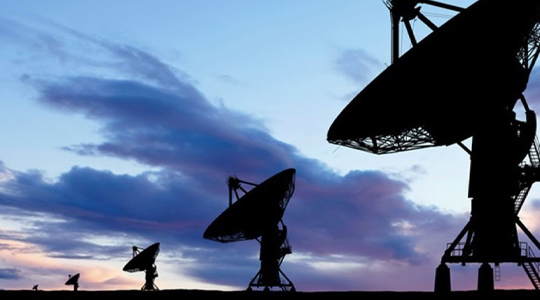
In the satellite world, we sometimes equate the movement toward digital transformation with the evolution of the gateway, but that’s a limited vision. Digital transformation has already moved satellites from analog, bent-pipe systems to channelized, software-defined payloads. And digitalization can enhance almost every part of the satcom ecosystem, from the planning of services all the way to remote terminals.
In fact, terminal advances are a particularly fruitful realm to explore. Many use cases come to mind, particularly across aero, maritime and disaster recovery.
Satcom’s contribution to commercial inflight communications is an area of focus for many companies. What the airborne operators want is more capability for less size, weight and power (SWaP). Digital IF can both reduce SWaP and ease integration by eliminating the need for heavily shielded co-ax cables in favor of significantly lighter optical cables. This will also allow tie-in to the onboard network and compute infrastructure.
Maritime, a traditional satellite market ripe for capitalizing on new space segment technologies like software defined satellites and LEO constellations, faces similar needs. Cruise ships, freighters, military vessels and even yachts are floating data centers with LAN networks throughout. But ships need multiple antennas to ensure visibility to the satellite regardless of what direction the ship is traveling. Moving to a digital infrastructure allows satcom integration into the ships’ data centers and networks, reducing installation, support and maintenance costs, as well as SWaP.
Disaster recovery situations also need a lot of capability in a small, mobile package. By using generic, digital equipment and minimizing specialized satcom hardware, more applications can be packaged into a remote terminal. With interoperability standards in place, the same platform could support on-site satcom, WIFI and cellular phone networks in smaller, self-contained network packages.
These few examples show some of the possibilities in the digital transformation of satellite, and they highlight the central role that evolving antenna technologies play in realizing those possibilities. That’s why DIFI is pleased to have so many antenna developers as members.
Antennas are the nexus point where the space and ground segments join to form a unified space network. Today, signals come off these antennas in analog form to be used by legacy ground systems. Increasingly, that’s becoming an unnecessary step as digital interface moves into antennas. In standards bodies like DIFI, conversations are occurring between antenna makers, ground vendors, satellite operators and producing results.
Read more from DIFI Consortium.
